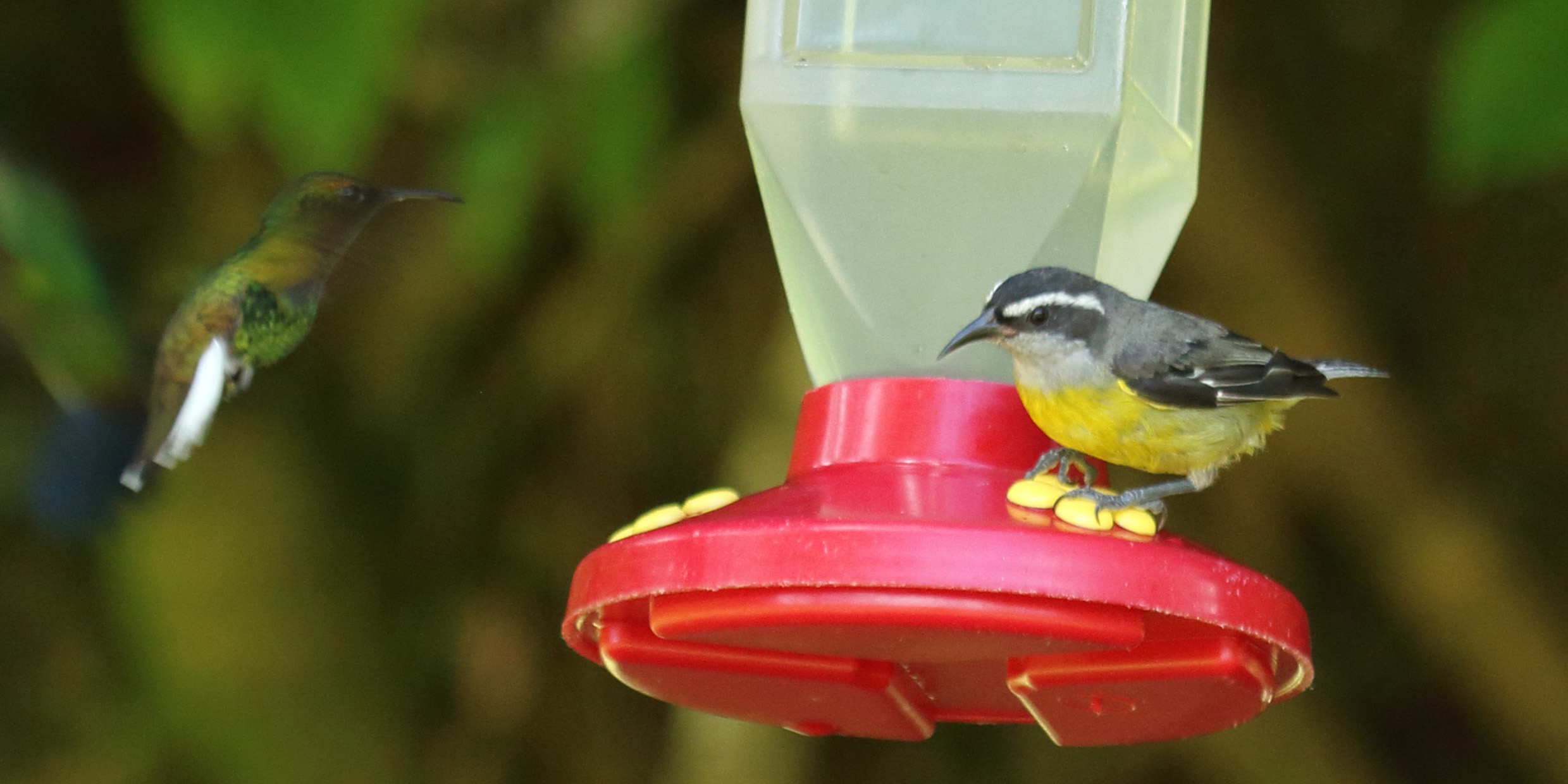Originally published 30 January 2005
Hummingbirds and bananaquits at the bird feeders. Can’t help but smile. Can’t help but feel a thrill. Who can be glum in the face of so much animation — so much of what is—packed up in those tiny bodies, abuzz with life, turning sugar into energy.
What I have in common with the hummingbirds and bananaquits — and the ants, the boas, the love vine, the sea grape, the sand flies, the prickle grass, the bat moths, the fish hawk, and the barracuda — is carbon chemistry.
All life on Earth is a flourish on the theme of carbon. If life on Earth can be thought of as music, it is a rhapsody in C.
Carbon is the wizard element, the archmagician. No other atom is so versatile in its arrangements with itself. And no other atom is so fluent in its conversations with other elements; it forms alliances with ease and grace.
Of the 92 elements that make up the natural world, carbon is the most prolific when it comes to making molecules. Carbon compounds outnumber the compounds of all other elements put together. We divide chemistry into two branches: organic chemistry (the chemistry of carbon), and inorganic chemistry (the chemistry of everything else).
Carbon is not so ready to give up electrons as, say, hydrogen or calcium. Nor is it so eager to receive electrons from its neighbors as, say, oxygen or chlorine. It is a giver and a taker in moderation, in medio stat virtus. If elements can be thought of as having personalities, carbon is steady, balanced, reliable — welcoming friendships, but content with its own company.
These qualities make carbon the armature of life. Chains, trees, and rings of carbon atoms are the skeletons of all living matter. The molecules that account for the muscles of the heart, the stink of a skunk, the color of carrots, the hormones of sex, the taste of vanilla, the hot pungency of peppers, have backbones of carbon.
Plain old carbon. As plain as soot. And old — as old as fire, as old as the charcoal cave drawings of our Cro-Magnon ancestors. Carbon was one of the first elements to be utilized by humans in a pure form.
Where did this stuff come from?
In the beginning there was hydrogen. Then, in the first few minutes of the creation, some hydrogen nuclei fused to form helium. But the universe was cooling too fast for helium nuclei to fuse and make the heavier elements — carbon, nitrogen, oxygen, and all the rest.
Those elements were cooked up in the hot interior of stars. But when physicists started considering this possibility, there was a problem. Two helium‑4 nuclei fuse to form beryllium‑8, an unstable element that lives for only about one ten-quadrillionth of a second, which did not appear to be long enough for a beryllium nucleus to capture another helium to make carbon-12.
Then the astronomer Fred Hoyle and others predicted that a third helium nucleus might be captured through was was called a “resonant reaction,” where the energy of the captured particle exactly matches the minimum energy required to initiate the reaction. The prediction was based on theory alone, but soon atomic physicists confirmed that the energies were just so.
Now, as reported in a [2005] issue of Nature, the details of the process across a broad range of temperatures have been refined experimentally, using data from the world’s great particle accelerators. The resonant reactions at the cores of stars have not only been conceived by the human mind, but confirmed on Earth — one of the great triumphs of astrophysics.
We are here — with the hummingbirds and bananaquits — because of a wonderful tunefulness that’s built into nature. Every carbon atom on Earth was cooked up in a red giant star before the Earth was born — leaping the beryllium gap by a kind of musical magic. Nature singing the song of life.
As I watch the birds at the feeders I think of something the Jesuit mystic Pierre Teilhard de Chardin wrote: “Man has every right to be anxious of his fate so long as he feels himself to be lost and lonely in the midst of the mass of created things. But let him once discover that his fate is bound up with the fate of nature itself, and immediately, joyously, he will begin again his forward march.”



